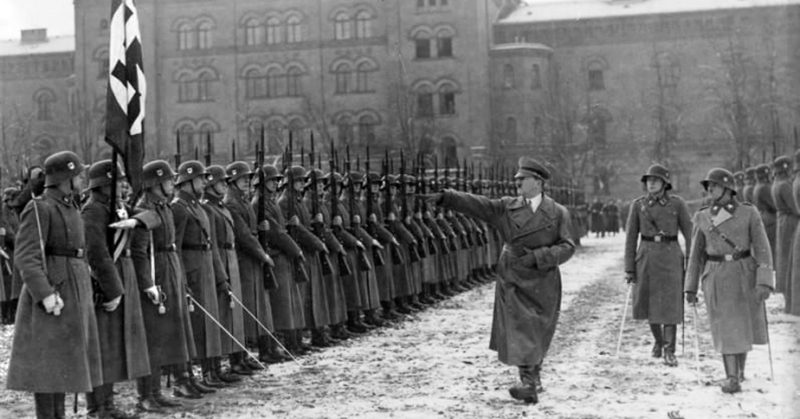The Associated Press released an internal report which detailed an extraordinary agreement with Nazi Germany during World War II. In a deal that was authorized by senior US officials, the AP made an arrangement with an SS officer to acquire photographs from Nazi photographers and to make them available to US newspapers.
The deal was made in 1941 and lasted until Germany’s surrender at the end of WWII. The report comes months after German historian Norman Domeier found a letter mentioning the deal in the papers of the AP’s former bureau chief.
The report includes papers that were recently declassified at the AP’s request. These include letters of approval from a wartime censorship office that was run by an ex-AP editor.
In return, the AP provided photos of US war operations and Allied advances. These photos were reviewed by Adolf Hitler and published by Nazi publications.
AP officials strongly defended the arrangement in an interview this week. The AP said that the discussions were conducted in neutral countries and that the photos had news value, even if they were taken by the master propagandists from the Nazi party.
John Daniszewski is the vice president for standards and editor at large at the AP. He defended the deal by noting that the photographs (still available for purchase on an AP website) were moderated to avoid using any blatant propaganda and that captions clearly stated the origins of the photos.
Reviewing the photos as printed in US newspapers shows that the policy of captioning the photos was not strictly followed. There are many examples of US newspapers publishing the Nazi photos and crediting them to the AP. In at least one case, a caption credits Helmut Laux, the Waffen SS officer who struck the deal with the AP.
Daniszewski says that in the context of the times, readers would have been aware that there were censors on both sides moderating what photos could be shown. Readers would have realized that the photos were taken by the Nazis even without proper captions, he said.
He said that it is easy to second guess decisions made over 70 years ago, but their investigation did not uncover any attempt to deceive anyone about the origins of the photos.
Nicholas O’Shaughnessy is a communications professor at Queen Mary, College of London and an author of a book about Nazi propaganda. He says that the AP deal gave the Nazis a direct pipeline to feed their propaganda to the citizens of Allied nations.
He says that it was cynical of the AP to use the photos and act like the camera never lies. These photos from the Nazis were all lies, portraying Hitler in the way he wanted to be seen, according to O’Shaughnessy.
It was Domeier’s visit to the Wisconsin Historical Society earlier this year that led to the revelations about the deal. He was researching the papers of Louis P. Lochner who was the Pulitzer Prize-winning bureau chief in Berlin during the war. A 1946 letter to Lochner from Willy Brandt, a former employee from Germany (not the former German chancellor) in which Brandt confessed to participating in the photo trades.
After Germany declared war on the US in 1941, Lochner, Brandt and other American reporters and Germans working for American news bureaus were arrested as the Nazis tried to gain access to the AP bureau and its photo operations.
Photos were traded in Lisbon in a diplomatic pouch with the help of an AP correspondent. Later, they were traded on a route through Sweden. At least 10,000 photos were traded in this manner.
Last year, Harriet Scharnberg who is another German researcher, published a paper about a photographer employed by the AP before 1941. The photographer had known ties to the SS.
In March, Domeier presented his findings to the German Historical Institute. In the meantime, the AP prepared to present its own findings.
According to the AP, when Brandt wrote his letter to Lochner confessing to participating in the photo trades, he had no idea that Lochner had been a central player in the arrangement from the beginning.
When Lochner was deported from Germany after his arrest, Laux was a passenger on the same train. He propositioned Lochner and Lochner was receptive to the deal, according to the AP report. It was Lochner who provided Laux with a contact at the AP, NDTV reported.
The AP notified officials at the US censorship office on July 13, 1942. Bryon Price was the head of the office and a former AP executive editor. The AP report does not explain why the US approved the deal other than to assume that the government saw value in the information that might be gained from the Nazi photos.
